Ancient shiny coins, unique decentralized ledgers and the first ever airdrop. The history of money Part 1.
In a previous post, we saw the characteristics of money. In this post, we will take a look at the origins of money, where it was invented and what was used for monetary transactions until paper money was created.

Barter and Primitive Money
Before money was invented commerce and trade took place through barter, an act of simply trading goods or services directly, without any intermediary "medium of exchange". In small villages or tribes, with limited specialization of production and similar needs and wants, this was an acceptable approach. The problem with barter is that it has to occur a "double coincidence of wants" that means both the seller and the buyer of goods and services have to believe that the exchange is done on fair terms. For example, if you trade milk for eggs both parties have to believe that X amount of milk is equal in value to a Y amount of eggs.
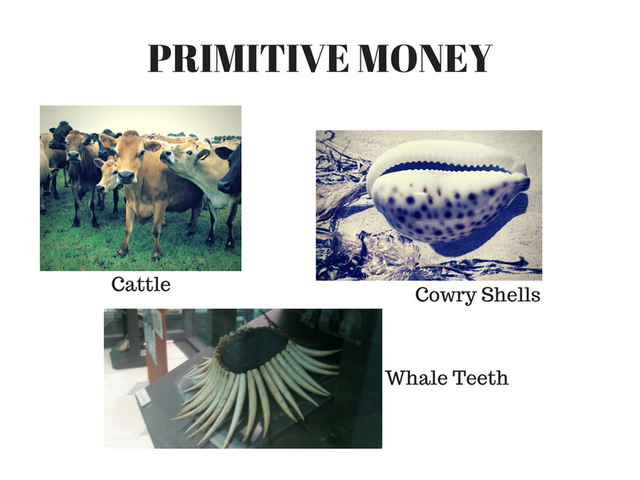
Whale teeth image source, the other two from canva.com
The more complex societies and economies become the less likely is such coincidence to happen. So, some primitive forms of money started to emerge when cultures around the world developed the use of commodity money, that is, objects that have value in themselves as well
as value in their use as money. Cattle, for example, which throughout history and across the globe have included not only cows but also sheep, camels, and other livestock, are the first and oldest form of money. With the rise of agriculture also came the use of grain and other vegetable or plant products as a standard form of barter or money in many cultures. Another example is cowries, the shells of a mollusk that was widely available in the shallow waters of the Pacific and Indian Oceans. Historically, many societies have used cowries as money, and even as recently as the middle of this century, cowries have been used in some parts of Africa. The cowrie is the most widely and longest used currency in history.
Invention of Coinage
Sometime around 1,100 B.C. during the Zhou dynasty, the Chinese moved from using actual tools and weapons as a medium of exchange to using miniature replicas of the same tools cast in bronze. And since nobody wants to reach into their pocket and impale their hand on a sharp arrow so, over time, these tiny daggers, spades and hoes were abandoned for the less prickly shape of a circle, which became some of the first coins. Chinese coins were made out of base metals, often containing holes so they could be put together like a chain.
And one interesting linguistic fact: as Portuguese trade emerged with China in the 15th century, these coins became known by their Tamilian (South Indian) name of கா / kāsu / coin money. Today, that name survives, for money in small denominations, in the English word that we all know "cash".
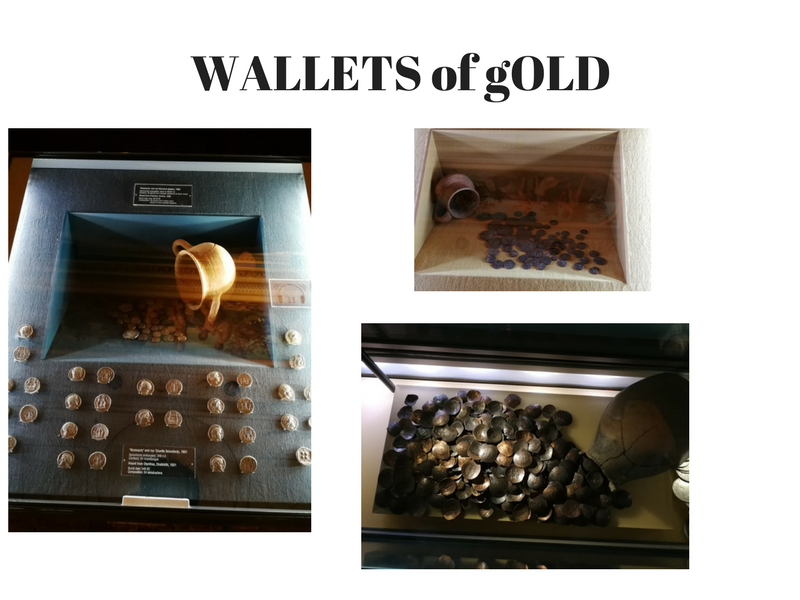
The first ruler in the Mediterranean known to have officially set standards of weight and money was Pheidon. In 600 B.C., Lydia's King Alyattes minted the first official currency. The coins were made from electrum, a mixture of silver and gold that occurs naturally, and stamped with pictures that acted as denominations. Fun fact is that when someone says, "as rich as Croesus", they are referring to the last Lydian king who minted the first gold coin. Unfortunately, minting the first coins and developing a strong trading economy couldn't protect Lydia from being conquered by the Persians.
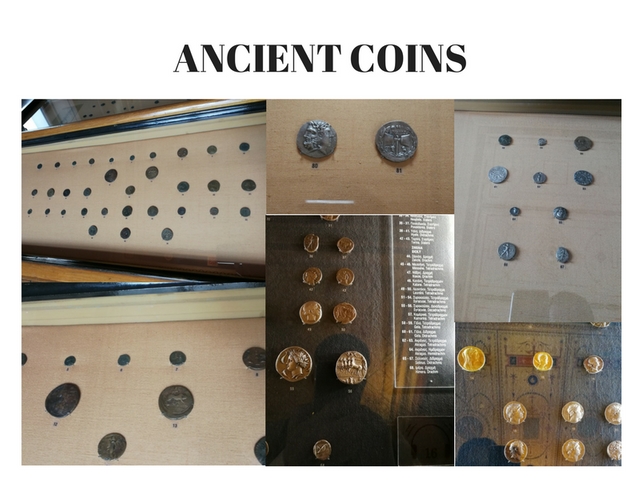
Similar coinage was adopted and manufactured to their own standards in nearby cities of Ionia, including Mytilene and Phokaia (using coins of electrum) and Aegina (using silver) during the 6th century BCE, and soon became adopted in mainland Greece. The use and export of silver coinage, along with soldiers paid in coins, contributed to the Athenian Empire's dominance of the region in the 5th century BCE. The silver used was mined in southern Attica at Laurium and Thorikos by a huge workforce of slave labour. A major silver vein discovery at Laurium in 483 BCE led to the huge expansion of the Athenian military fleet.
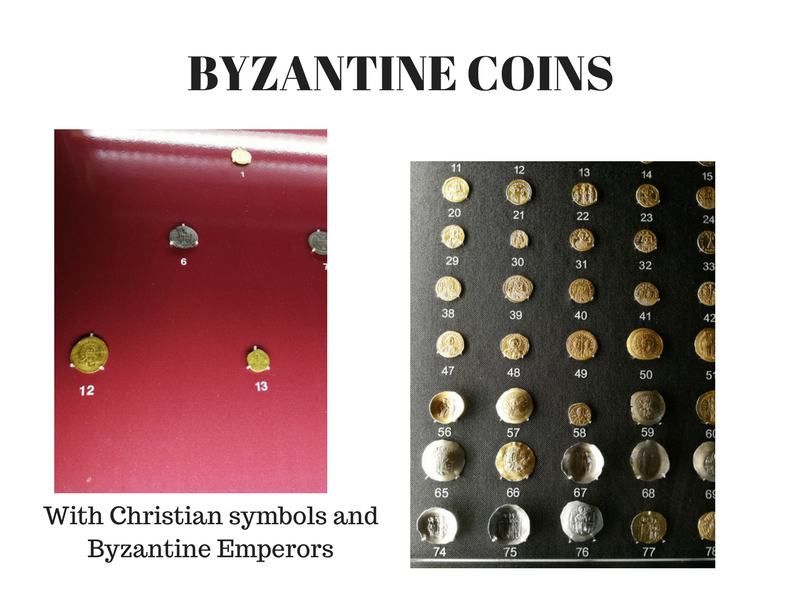
Coinage is a big step forward in transportability, standardization and institutionalization over barter or other primitive forms of money, but coins have problems as a medium of exchange in the areas of transportability ( they are bulky and heavy ), durability, fungibility and divisibility. It is also vulnerable to positive and negative supply shocks that cause price volatility, making it, at times, unstable as a store of value and unit of account. But, it was used for many hundred years until paper money was invented as we will see in the next part.
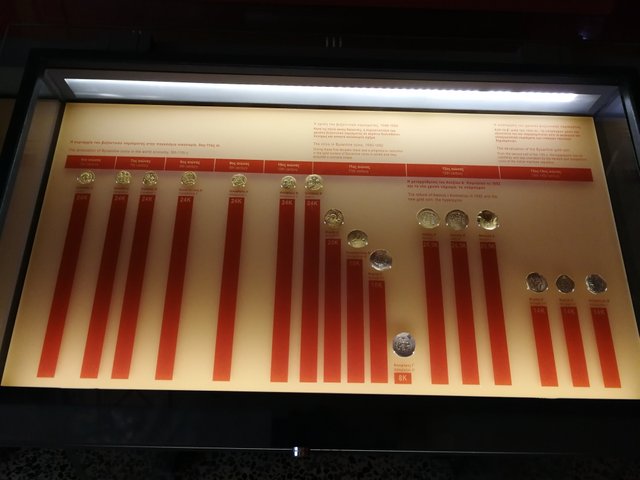
The devaluation of golden Byzantine coin.
Now we will see some interesting stories related to coins. The photos were taken at my recent visit to the Monetary Museum of Athens.
The first public decentralized ledger
On the island of Yap in Micronesia people used stones as money. A lot of small stones would get you a really big stone; some were the size of an elephant and weighed more than 8,000 pounds. Obviously, you didn't take the big stones home, you left them where they lay, but everyone knew the big stone was yours. These large stone disks were called Rai. They were "minted" from the limestone deposits of the nearby island of Palau and used as a currency until the 20th century.
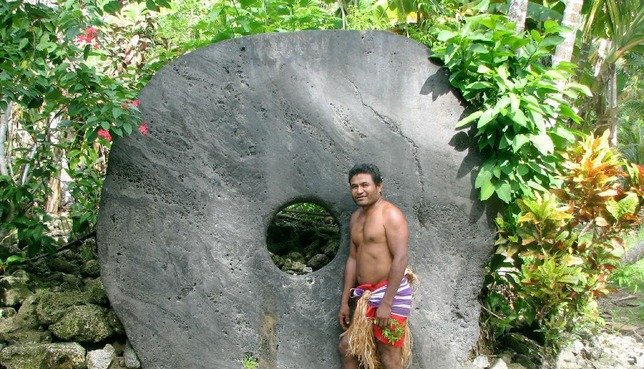
Image source
Given their size (thousands of pounds), Rai stones were not moved when spent, but simply changed owners. Every transaction was "recorded" orally within the small community, with the stone's ownership history becoming common knowledge. Eventually, the "transaction history/ledger" became the only part that mattered and the stones were somehow irrelevant. This is a naturally occurring use of a ledger of transactions. This ledger was shared orally between the inhabitants, attributed ownership and delegated property without a single stone moving, because everyone agreed on it, thus making it the first public decentralized ledger.
The first ever Airdrop
As I said above Athenians used silver that was discovered in the mountain of Laurium to mint coins. One these coins we see in the photo below, a ten drachmas silver coin. Many historians believe that every Athenian citizen was given one as a gift, after the victory in the wars against the Persians, thus making it probably the first airdrop in the history of mankind.
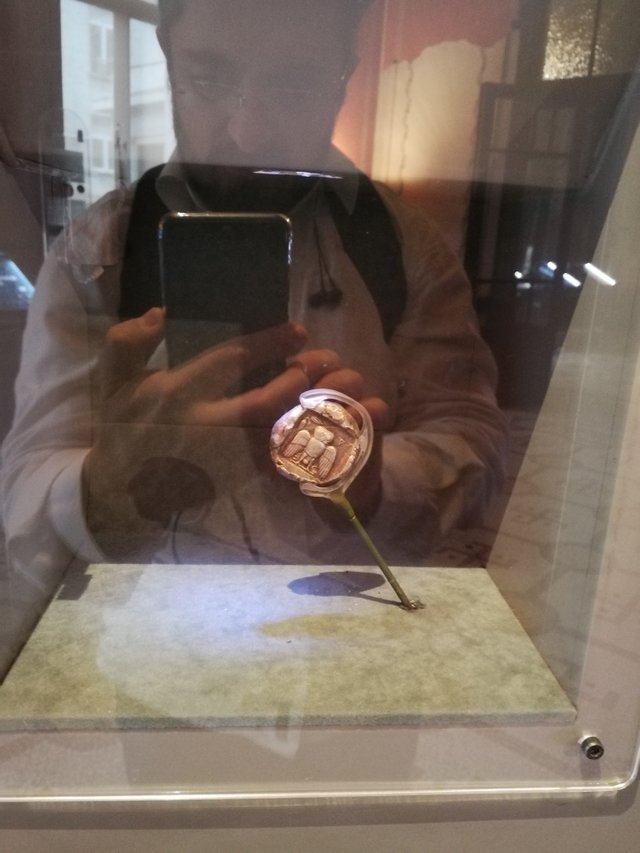
Love Coins
@dporn you come second and @viceindustry , not even close, because we, The Greeks , have invented that stuff long ago. These are coins that depict erotic acts.
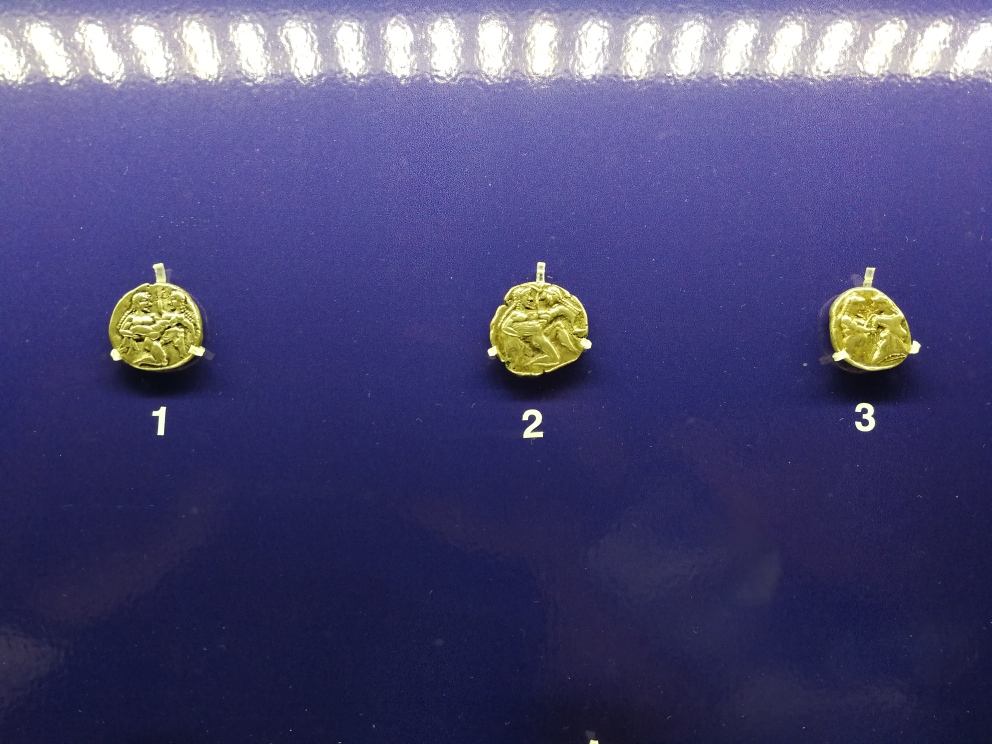
And this coin has balls. Literally…
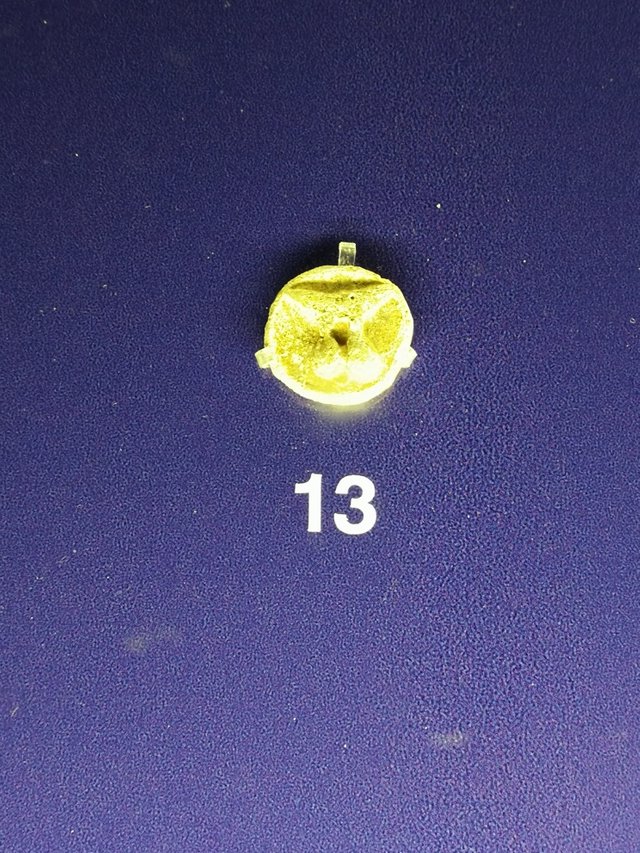
So with our ancient coins not only you were able to see nsfw related content but also had the monetary reward embedded in that same system and in your hand for that matter. Sorry guys, but as much I love your projects we have to agree there's no real innovation. These things were implement thousands years ago . :)
And with this humoristic story, we have reached the end. In the next and last post of the series, we will the evolution of money up to this very day.
And until we have all the coins that we want,
Be Healthy, Smile and Steem.
References and Additional Material
[1] Introduction to Digital Currencies MOOC 9 from University of Nicosia.
[2] https://www.linkedin.com/pulse/20141120164624-208991-what-is-bitcoin/
[3] https://en.wikipedia.org/wiki/History_of_money
[4] http://www.pbs.org/wgbh/nova/ancient/history-money.html
[5] https://www.investopedia.com/articles/07/roots_of_money.asp

I really wonder what those huge stones' actual use was. Why would anyone want to own one of those?
Interesting read once again, thanks!
I don't think they had any other use than a store of value.
Maybe the rightful owners were allowed to break them into smaller pieces that could be used in construction or even trading activities. Or maybe it was just a prophecy of how useless and obsolete physical currency would prove to be in the distant future. (hehe)
Ilias congrats for the research you are doing, this subject is really interesting! I'm looking forward for the next post, I hope you will include how governments and banks have come to control and manipulate the economy...
Thanks for the info!
Thank you . To be honest I am not really interested in that subject .
I’d rather find ways for us to overcome it
I agree, I don't like it either!
The only reason I am interested is because I believe that only by understanding it we can find ways to overcome it
Super content and sooooo important to grasp as people come to terms with the crypto world. I especially love that in Yap they had the Rai. Did you know that in Thailand we still measure land by the Rai?? Amazing world. I look forward to your next article.
Didn't know that . Thank you for your support . :)
Followed by
Was that intentional?
:D
Of course it was !!! :)
@iliasdiamantis I have enjoyed a lot your article about money!!!!!!
Thank you . :)
It is true that we know that the coins date, but I did not know they were so old, it's very interesting to know. My memory is only the Roman sesterces, but I suspect that at the time other peoples had also some other coins too. I know that barter was used at certain times as well. The big stones hum seem to be a little giant (laughs). But everyone had their own customs.

Yes, I was actually amazed to find out. Some new concepts aren't that new after all...
I totally agree with you.
Wow! I certainly learnt a lot... porn coins?! really?!
Really and I have the photos to prove it. Our ancestors were waaaaayyyyy ahead of times ... :)
I have enjoyed a lot your article about money, Andreas Antonopoulos often talks in his videos about the evolution of money and your article reminded me his lectures. Very nice work!
I am a huge fan of Andreas. One day I will interview him.
Very Informative post ! thanks for your efforts !
best wishes.
but it is not informative enough for you to upvote it ...
I'm sorry @iliasdiamantis I just forgot ha ha I always used to vote you can also check it in moes posts :) and I just upvot you ;)
You got a 1.32% upvote from @postpromoter courtesy of @iliasdiamantis!
Want to promote your posts too? Check out the Steem Bot Tracker website for more info. If you would like to support the development of @postpromoter and the bot tracker please vote for @yabapmatt for witness!